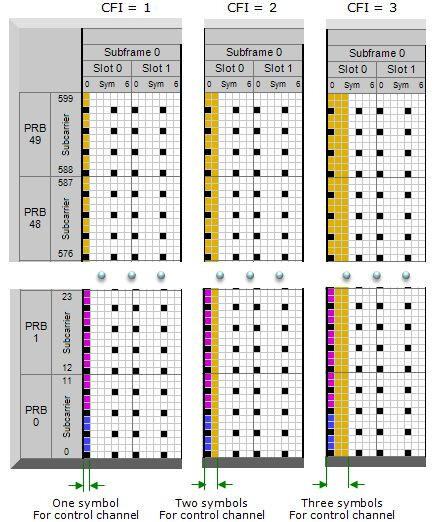Sometimes, it’s the smallest parameters that make the biggest difference.
Let’s talk about the Control Format Indicator (CFI) — a small setting that determines how many OFDM symbols are allocated to LTE’s control region per subframe.
You might think:
“1, 2, or 3 symbols? It’s just a number, right?”
But this number can completely shape the LTE user experience.
Here’s why:
When the CFI is set to:
![]() CFI = 1
CFI = 1
![]() More PRBs for user data → higher peak throughput
More PRBs for user data → higher peak throughput
![]() Limited PDCCH space → risk of control channel congestion under high load
Limited PDCCH space → risk of control channel congestion under high load
![]() CFI = 2
CFI = 2
![]() Balanced control and data capacity → safer for moderate load
Balanced control and data capacity → safer for moderate load
![]() Reduced data capacity compared to CFI = 1 → might congest under heavy load
Reduced data capacity compared to CFI = 1 → might congest under heavy load
![]() CFI = 3
CFI = 3
![]() More control channel capacity → stable scheduling in heavy load scenarios
More control channel capacity → stable scheduling in heavy load scenarios
![]() Fewer PRBs for user data → lower peak throughput, possible resource waste in light-load cells
Fewer PRBs for user data → lower peak throughput, possible resource waste in light-load cells
![]() Why It Matters:
Why It Matters:
If CFI is too low → The PDCCH can’t efficiently schedule all users.
If CFI is too high → You waste precious resources that could boost user throughput.
Think of it like managing a highway:
CFI = 1: Narrow gate, wide lanes → Can’t let enough cars in quickly.
CFI = 2: Balanced gate and lanes → A good trade-off.
CFI = 3: Wide gate, narrow lanes → Easy entry, but traffic jams ahead.
In LTE planning, even the smallest tweaks like CFI can unlock major performance improvements.
Have you ever experimented with different CFI settings in your network?
What worked best for you? Let’s share experiences and learn from each other!
LinkedIn: ![]()
